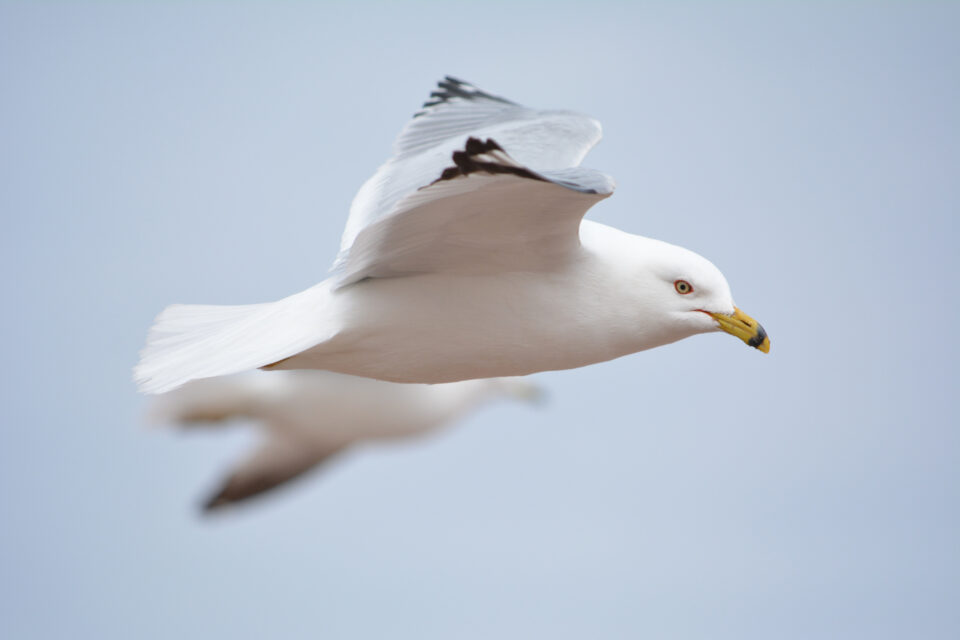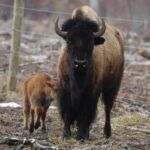A visit to Canal Park, Two Harbors, Grand Marais, or anywhere along the North Shore where humans are fishing or picnicking, wouldn’t be complete without observing gulls standing on rocks or posts, witnessing them fly, and hearing their wistful, pensive calls. However, they’re not seagulls; their specific names in northeast Minnesota are ringed-billed gulls, herring gulls, or simply gulls.
Most newspapers adhere to the AP Stylebook. It says to use the word “seagull” with caution, and the word gull is more encompassing.
Gaea Crozier is a nongame specialist with the Minnesota Department of Natural Resources. “These gulls are indigenous to northeast Minnesota in the Duluth area. Many of them have nests on Interstate Island near Duluth and Knife Island near Two Harbors,” said Crozier. She received her master’s degree in biology from the University of Minnesota Duluth, with a focus on birds.
“The word seagull is kind of like a common name or a slang name that people use for gulls,” she said. “Technically, seagulls are just a type of gull. We have several different species here. The gulls most commonly seen along the North Shore are the ring-billed gulls, which are a bit smaller and have a black ring on their bills. The other gull we see is the herring gull.”
There are about 14,000 gull nests on Interstate Island. Crozier knows this because she was involved in a project to count common terns, a threatened bird species in Minnesota and Wisconsin. Interstate Island is a small island created in the 1930s by dredging. It’s about 5 acres, and it’s covered with gulls and their nests, who are raising havoc for the common tern. It is situated in the St. Louis estuary—the Minnesota boundary line cuts through this small island with no human structures. In 2018, about 200 breeding pairs of common terns built nests on the island.
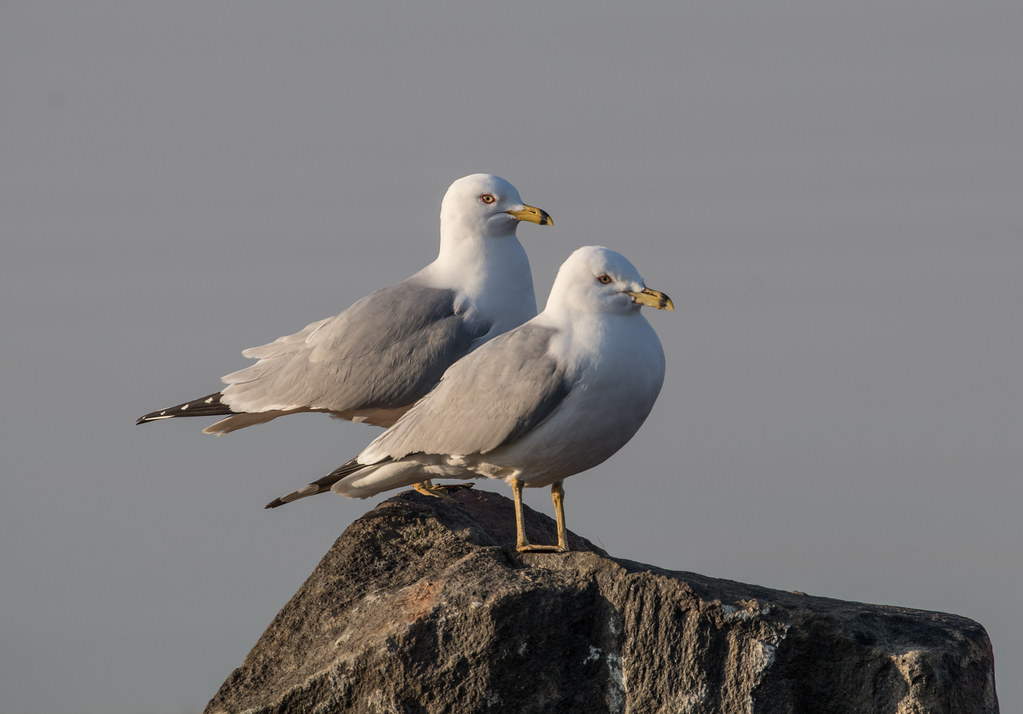
“The gulls can be aggressive, eating tern eggs and chicks, so we spend a lot of time trying to protect the terns,” Crozier said.
Both gulls and terns like to build their nests on flat surfaces. A gull will build on the flat roof atop a building or a flat rock with no predators around.
Crozier described the complex relationship between gulls and humans. “People often feed them, which we discourage because it habituates them to humans and isn’t good for their health. It also exacerbates problems, like increased populations and the mess they create.”
Gulls do migrate, but it is possible to see them in Duluth in the winter. The open water of Lake Superior attracts gulls year-round, even in winter, provided they can find food. Though some people see gulls as nuisance birds, they have their place in the ecosystem. “They help regulate fish populations and are an integral part of the aquatic food chain,” Crozier noted.
Clinton Dexter-Nienhaus is the vice president of the Duluth Audubon and leads birding field trips for the society. According to him, there are 32-34 different species of gulls documented in North America. In the United States, there are about 20 different types of gulls. The Arrowhead region, including St. Louis, Lake and Cook counties, has seen 19 species.
“Typically, our numbers of gulls don’t fluctuate terribly down here in Duluth,” said Dexter-Nienhaus. “But up the shore, it certainly changes because there’s not the same accessibility to food or water, so the reason we get a lot of gulls around the Duluth area is because we have the big landfill over in Superior.”
He said that further up the shore, like Grand Marais, gulls don’t have that same food accessibility. “However, Grand Portage is a little different because there are commercial fisheries.”
The gulls like to nest on all the little “islands”—those rocks that just poke out of the water often will have nesting colonies. But he added those birds might fly down to Duluth for food and return to their nest.
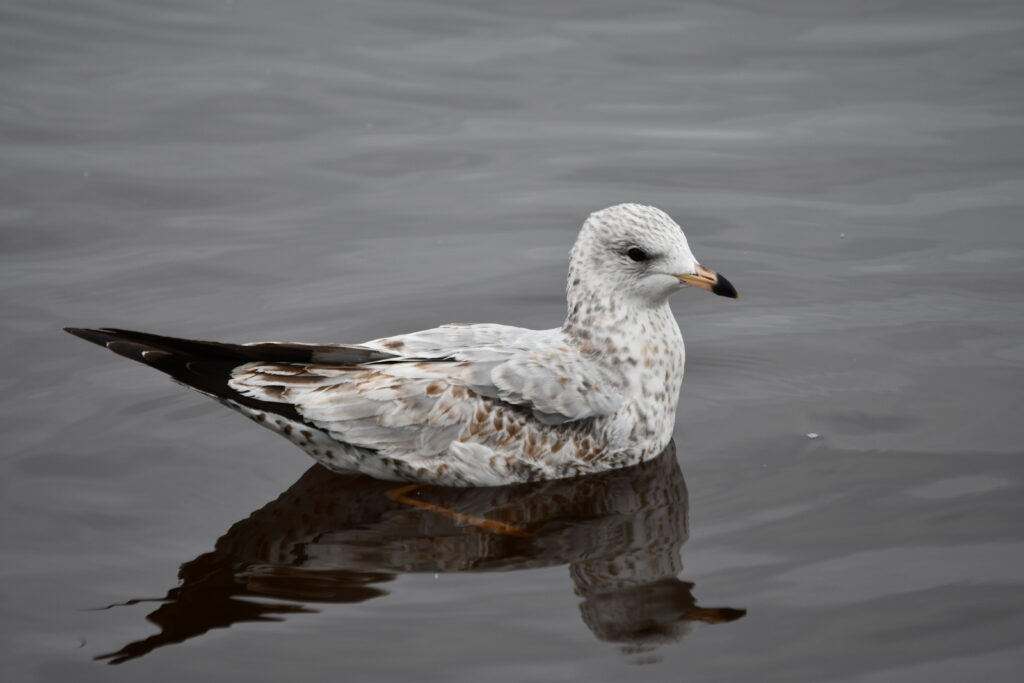
Knife Island, about 300 feet by 800 feet, is a favorite nesting spot for gulls near Two Harbors.
“They’re such a dynamic species. They are very good flyers, so they cover a lot of ground in a day,” said Dexter-Nienhaus.
Gulls will eat junk food but bring their babies fresh fish.
You might think you are seeing more than one species of gulls, Dexter-Nienhaus said. “Gulls are one of the more difficult groups of birds to identify because they have different age classes and each age class looks different from one another.” It take gulls about four years before they reach adult plumage.
Laura Erickson is a bird expert who has authored 13 books and hosts a radio show called “For the Birds,” which is heard on many public and community radio stations.
She doesn’t mind if the general public calls herring gulls and ring-billed gulls seagulls. “It’s just an old word, probably from England, where people lived by the sea. I don’t mind the term because it’s what people call them, but a lot of bird watchers feel very offended because they want everybody to know their proper name.”
“Some don’t migrate very far, but most ring-billed gulls leave Duluth and Lake Superior for the winter,” Erickson clarified. “They go to the central and southern states, some as far as the Gulf or the Atlantic.”
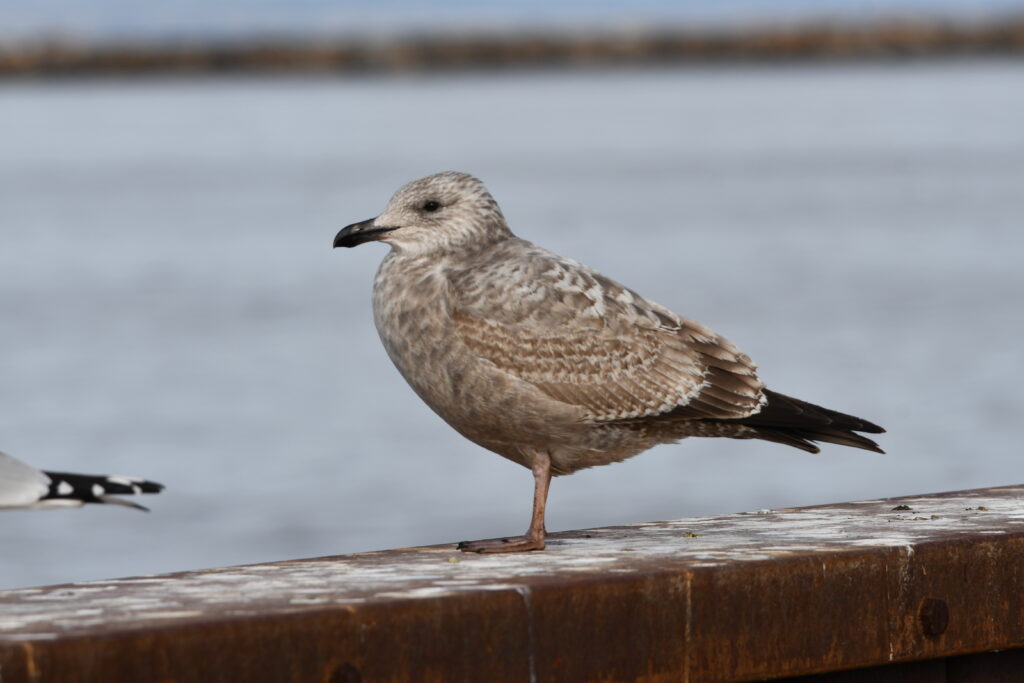
Gulls are primarily meat-eaters, feeding on fish, insects, and water animals like shrimp and clams. Erickson mentioned that climate change had altered their migration patterns, with some now overwintering in Duluth.
Most people are familiar with ring-billed gulls. “That’s the one that comes to McDonald’s and wants your french fries,” Erickson said.
Erickson described the subtle differences between ring-billed and herring gulls, which would be hard for the average person to notice without binoculars.
So, do gulls live near humans to eat junk food? “They live here naturally but have learned to exploit human food sources,” Erickson said. “Much like we take advantage of seasonal foods.”
“Oddly enough, the birds people tend most to dislike are usually the birds that are most like humans,” Erickson said, “And their ability to exploit sources of food.”
Some people like to feed gulls, but Erickson says that is not good for the bird’s health and attracts birds who will be pooping on picnic tables and mooching from people who do not want to share their lunch.
Erickson said that although many people see gulls as nuisance birds that grab picnicking families’ food, they have been on the North Shore forever.
“They are part of the fabric of the whole natural world.”


